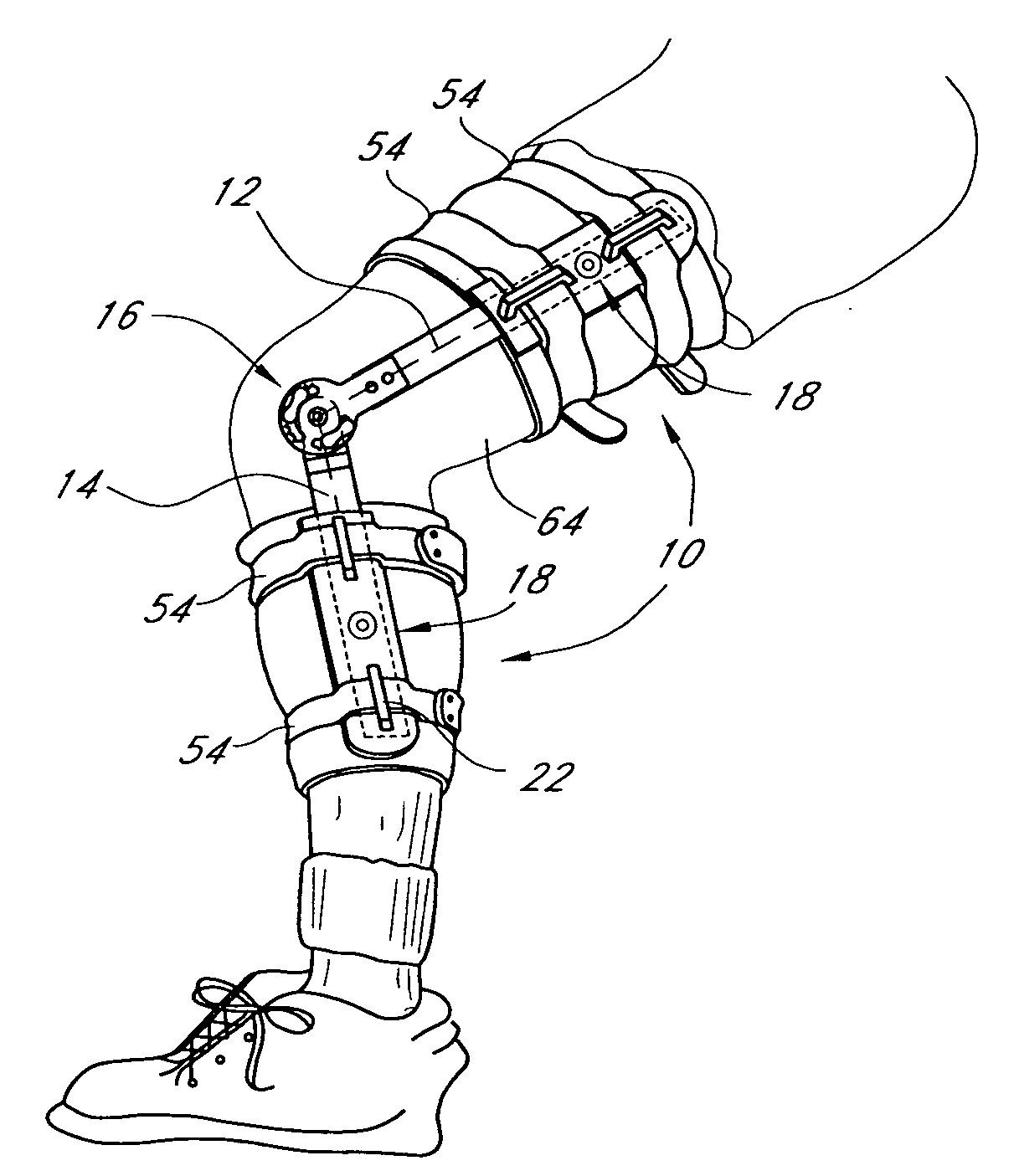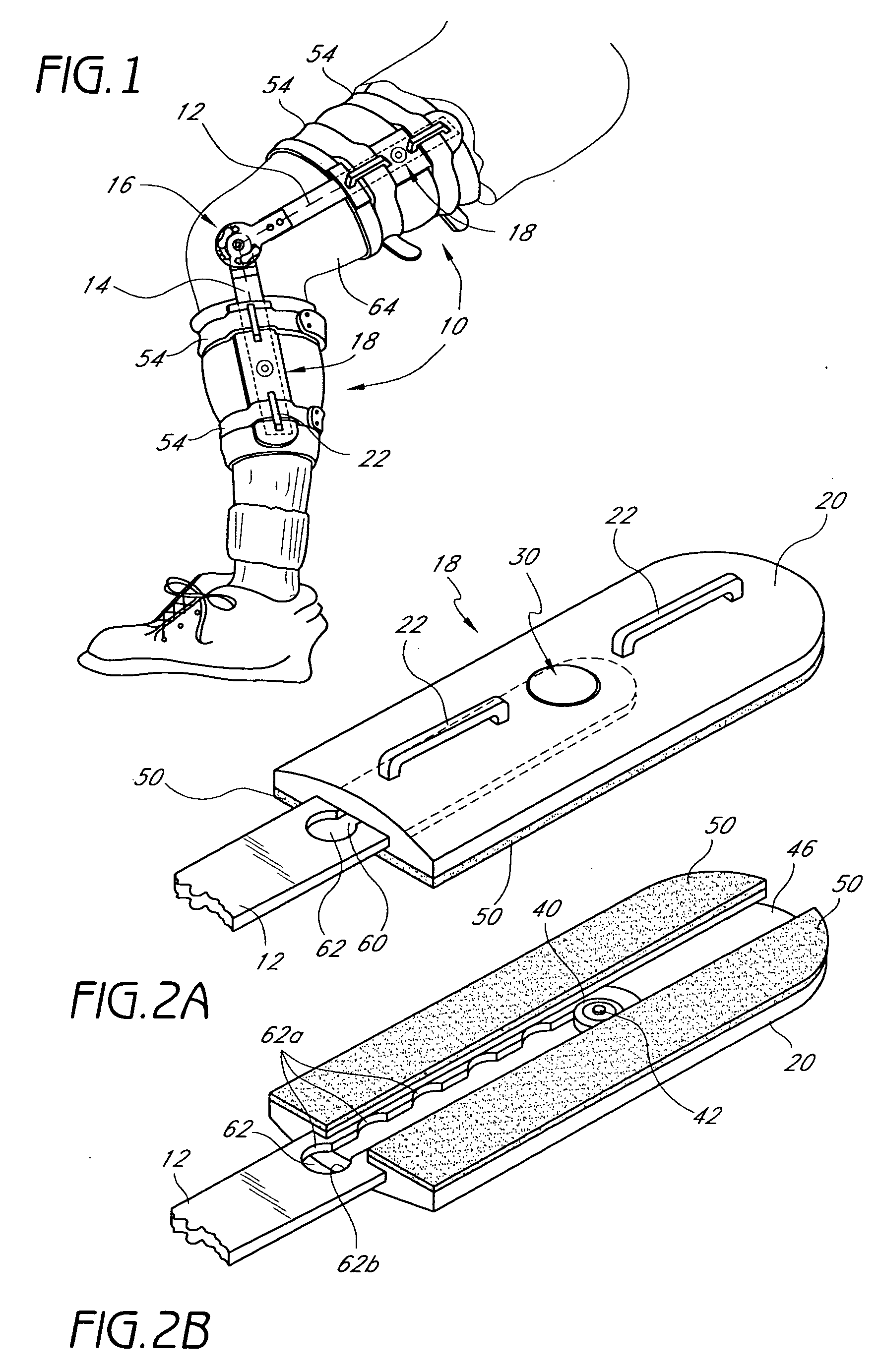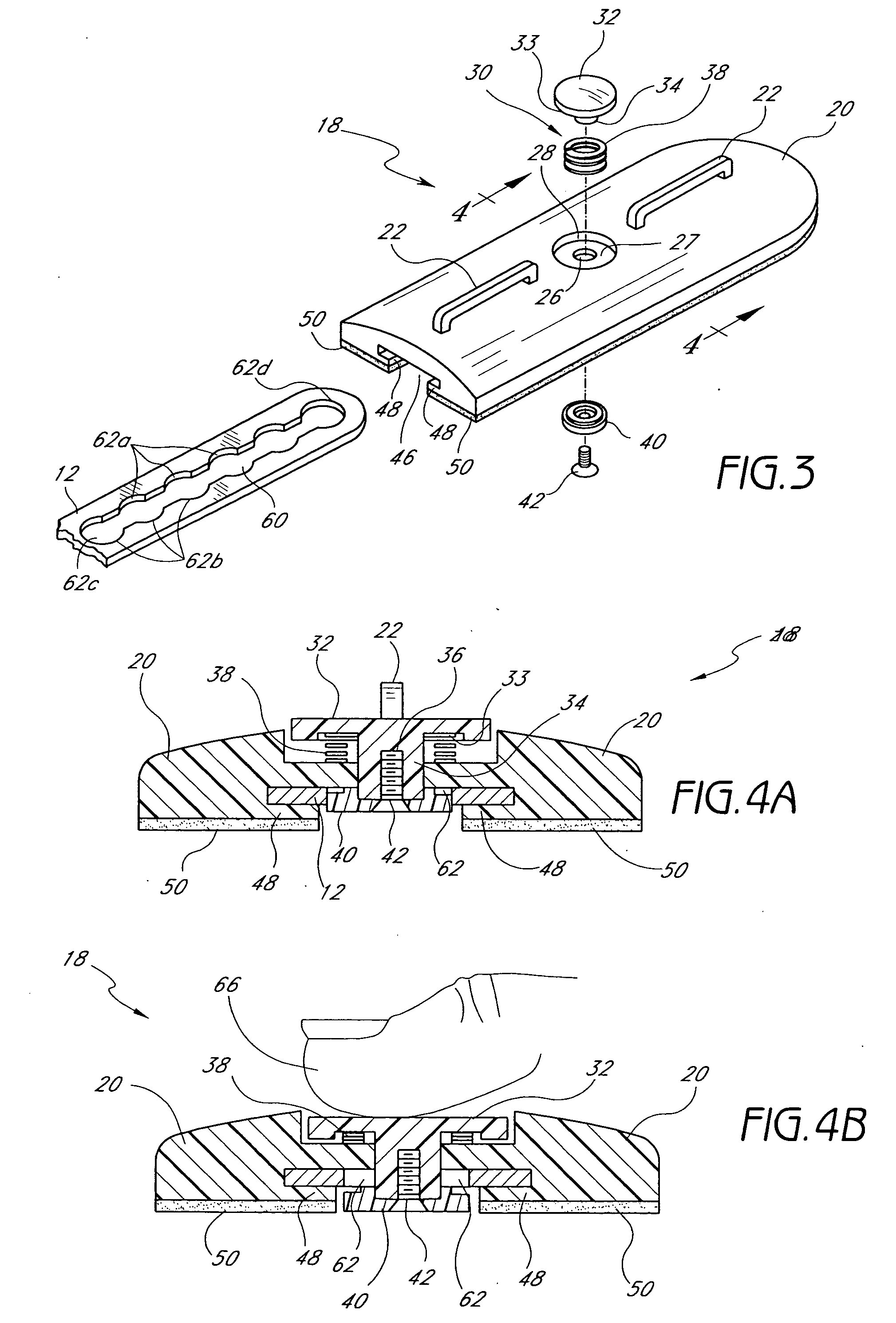Orthopaedic brace having a range of motion hinge with an adjustable-length strut
a range of motion hinge and orthopaedic brace technology, which is applied in the field of orthopaedic braces, can solve the problems of inability to adjust the brace to fit the patient, inconvenient adjustment of the brace, and inability to adapt to the patient, so as to improve the protection of the patient, speed up recovery, and save costs
- Summary
- Abstract
- Description
- Claims
- Application Information
AI Technical Summary
Benefits of technology
Problems solved by technology
Method used
Image
Examples
Embodiment Construction
[0028] An orthopaedic brace 10 is shown in FIG. 1 operatively attached to a leg 64 using a plurality of straps 54 mounted on an upper strut 12 and a lower strut 14 with a hinge assembly 16 disposed between the upper strut 12 and the lower strut 14. While only one side of the orthopaedic brace 10 is shown (i.e. the hinge assembly 16, the upper strut 12, and the lower strut 14 or “assembly”) it should be understood that an identical, but mirror image, assembly is provided on the opposite side of the leg 64.
[0029] Each strut 12 and 14 is provided with a preferably identically configured wing assembly 18 although variations in either are contemplated, which is slidably mounted for adjustable movement on the elongated struts 12 and 14. Stated in another manner, each strut 12 and 14 is adjustable in length relative to the length of the strut between the hinge 16 and the straps 54 through adjustable strut assemblies 18. Such will be considered hereafter as the length adjustment of a strut...
PUM
 Login to View More
Login to View More Abstract
Description
Claims
Application Information
 Login to View More
Login to View More - R&D
- Intellectual Property
- Life Sciences
- Materials
- Tech Scout
- Unparalleled Data Quality
- Higher Quality Content
- 60% Fewer Hallucinations
Browse by: Latest US Patents, China's latest patents, Technical Efficacy Thesaurus, Application Domain, Technology Topic, Popular Technical Reports.
© 2025 PatSnap. All rights reserved.Legal|Privacy policy|Modern Slavery Act Transparency Statement|Sitemap|About US| Contact US: help@patsnap.com



